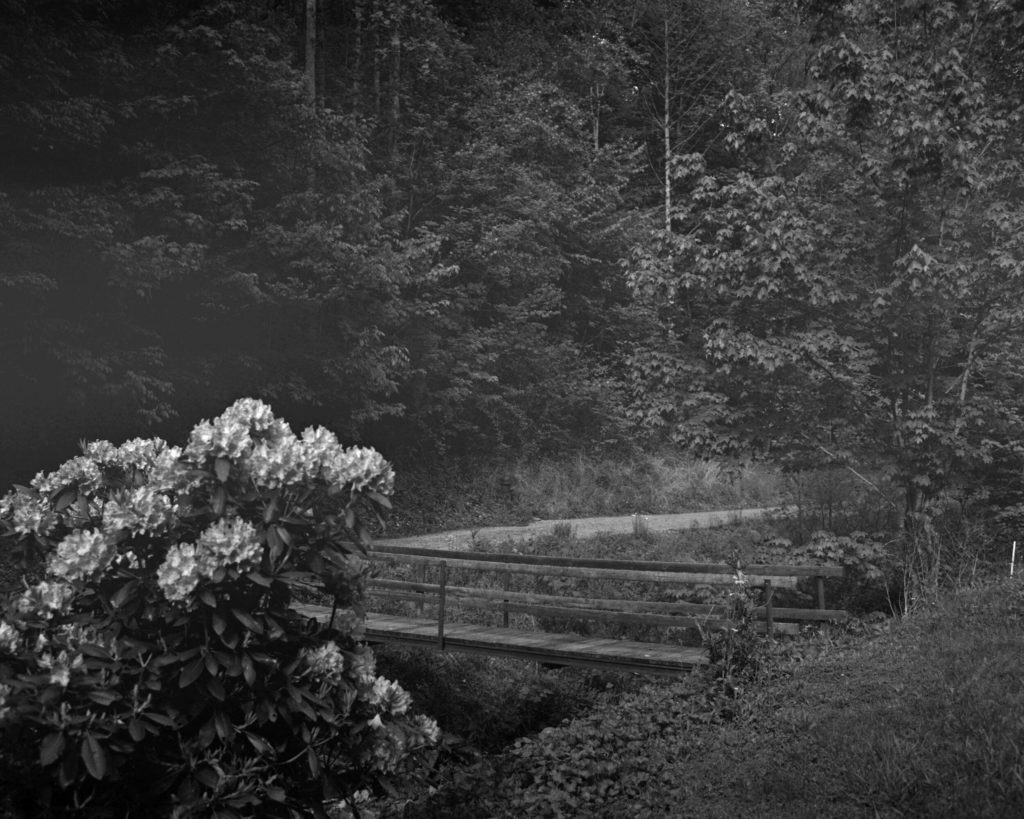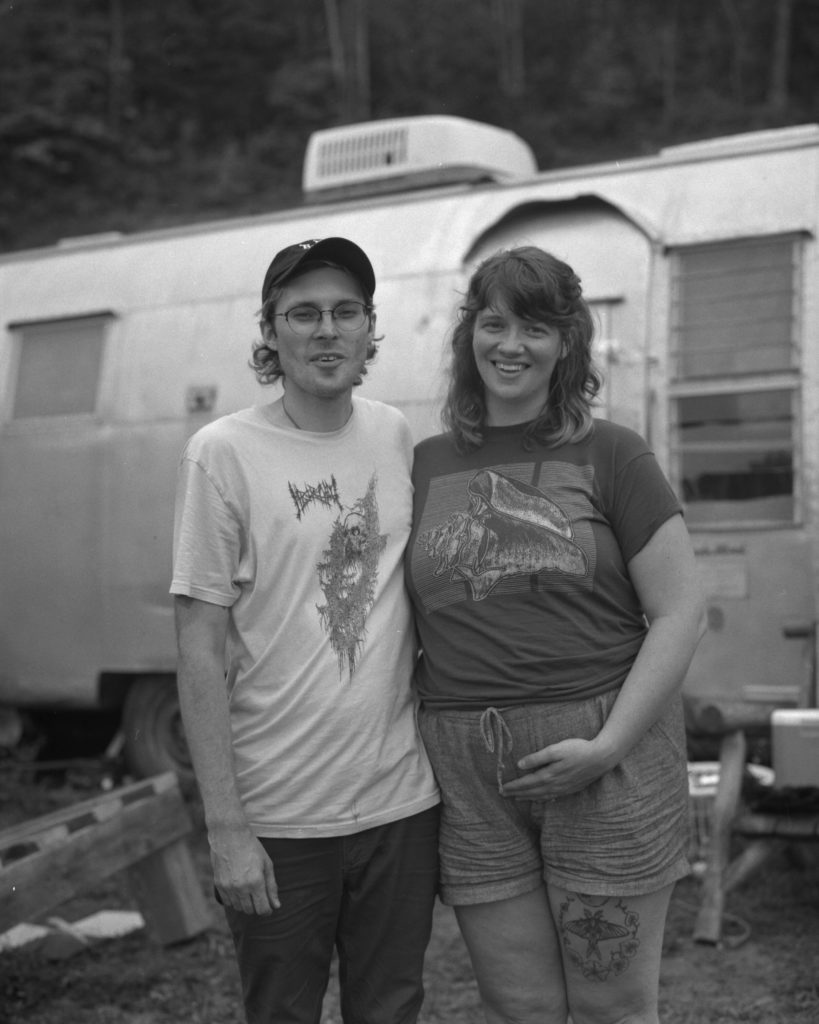The theme of leaving home is, by definition, a core concern for the Urban Appalachian Community Coalition. The longing for home and the struggles of being in a new place are the very issues that give rise to the urban Appalachian experience. This is why it grabs our attention when we find an Appalachian artist who is treating these themes in their work. Jared Hamilton is a prolific photographer, and in his most recent project, he showcases the theme of coming and going in a zine entitled Familiar Paths, Volume 1.
Originally from Pikeville, Kentucky, and now living in Whitesburg, Jared Hamilton is about as Appalachian as it gets, and he has no shortage of subject matter for his photographs that could direct him to focus exclusively on the people, culture, and even geography of Appalachia. Yet, his newest project focuses, at least in part, on leaving Appalachia. Hamilton says he wanted to focus on a specific form of nostalgia in this new project, “a nostalgia that projects the experience Appalachian people know when they are away.” Rather than a nostalgia that puts an unrealistic and rosy color on memory, the nostalgia in Hamilton’s new zine, Familiar Paths, Volume 1, takes in the bittersweet forms of memory that characterize the experience of those who have left their Appalachian homelands.
Hamilton told me he specifically chose to present these images in black and white because, “black and white creates an unreal quality to the images, it takes us into a romanticized dream-world. These are not journalistic images; they speak to older images of Appalachia like we see from the 1940s and 50s.” One photograph in particular shows us a narrow dirt road that runs between overhanging rock formations on one side and a precipitous cliff on the other. Trees line the road on both sides. The trees have lost their leaves; this is obviously a scene from late fall or winter. It is a scene that reveals rural and wild Appalachian regions, and it contains all the elements of a romanticized vision. The rural backroads of Kentucky are familiar themes in depictions of Appalachia. Yet, it also appears stark and forbidding. There is a haunting quality to the image that hints at a nuanced vision of the region that is not properly understood by those from outside. Hamilton does not shy away from complexity even in his nostalgic images.

His choice to publish his work in the form of a zine is striking to me. This is a form that has its roots in the DIY culture of early punk rock. Zines were handmade, xeroxed and stapled, and distributed by the people who made them. Hamilton explained, “I wanted this to be a tangible object—something you can hold in your hands rather than just images on a screen.” In turning to an older ideal for his vision of Appalachia, Hamilton also rendered the project in a form that can escape the digital world. Again, Hamilton’s particular version of nostalgia appears to return images and ideas to reality rather than obscure them.
Jared Hamilton got his start in photography in high school. He remembers that “freshmen were not supposed to be allowed to take the newspaper class, but my English teacher went around that rule and got me in. That was the first time I touched a camera.” Since that early introduction, Jared Hamilton has moved on to document his surroundings. He looks at his world as an insider, but he as able to create enough distance from his subjects to provide a wide perspective in his work. While his zine creates a feeling of nostalgia, some of his other work is anything but. Scrolling through his Instagram you will find those quintessential rural Appalachian images, but you will also see features of how the issues of our time area taking place in Appalachia. Images of the coal plants, Black Lives Matter marchers, and the faces of conflict are evident throughout. But there are also images that show us contemporary life for Appalachian people, images that resist the external drives to keep recycling the tired old stereotypes.

Jared Hamilton explained that these stereotypes were things he quite specifically wanted to counter in his work. He told me, “Many people I know feel extremely alienated from those images. One of the reasons for Familiar Paths was to let people know they are properly seen and heard.” Though the photography in the zine is designed to evoke the nostalgia felt by those who leave their Appalachian homes, he also gives a sense of the reality left behind, and it creates this blend of moods by grounding the work Hamilton’s immediate surroundings. We see images of very real people in very real contexts in this work.
Jared Hamilton is hard at work on several projects. He is working with others to create a non-profit called the Mars Collective in Pikeville that will give a platform for artists and other creatives to develop their work. The website for this is still under construction, and this leads to a curious intersection. In Familiar Paths there is a photograph of none other that Malcolm Wilson, perhaps the premier Appalachian photographer, and the subject of an article on the Urban Appalachian Community Coalition blog some time ago. Malcolm Wilson is developing the website for the Mars Collective. Jared Hamilton told me he has known Wilson for about twelve years. It does seem likely that two talented Appalachian photographers should converge on a project that helps other creatives. If you would like to see his work, below are links to Jared Hamilton’s website and his Instagram.
https://jaredhamiltonvisuals.com/
https://www.instagram.com/jaredhamiltonvisuals/
Mike Templeton is a writer, independent scholar, barista, cook, guitar player, and accidental jack-of-all-trades. Check out his profile in UACC’s new Cultural Directory. He lives in downtown Cincinnati with his wife who is a talented photographer. They spend their free time walking around the city snapping photos. She looks up at that the grandeur of the city, while Mike always seems to be staring at the ground.

